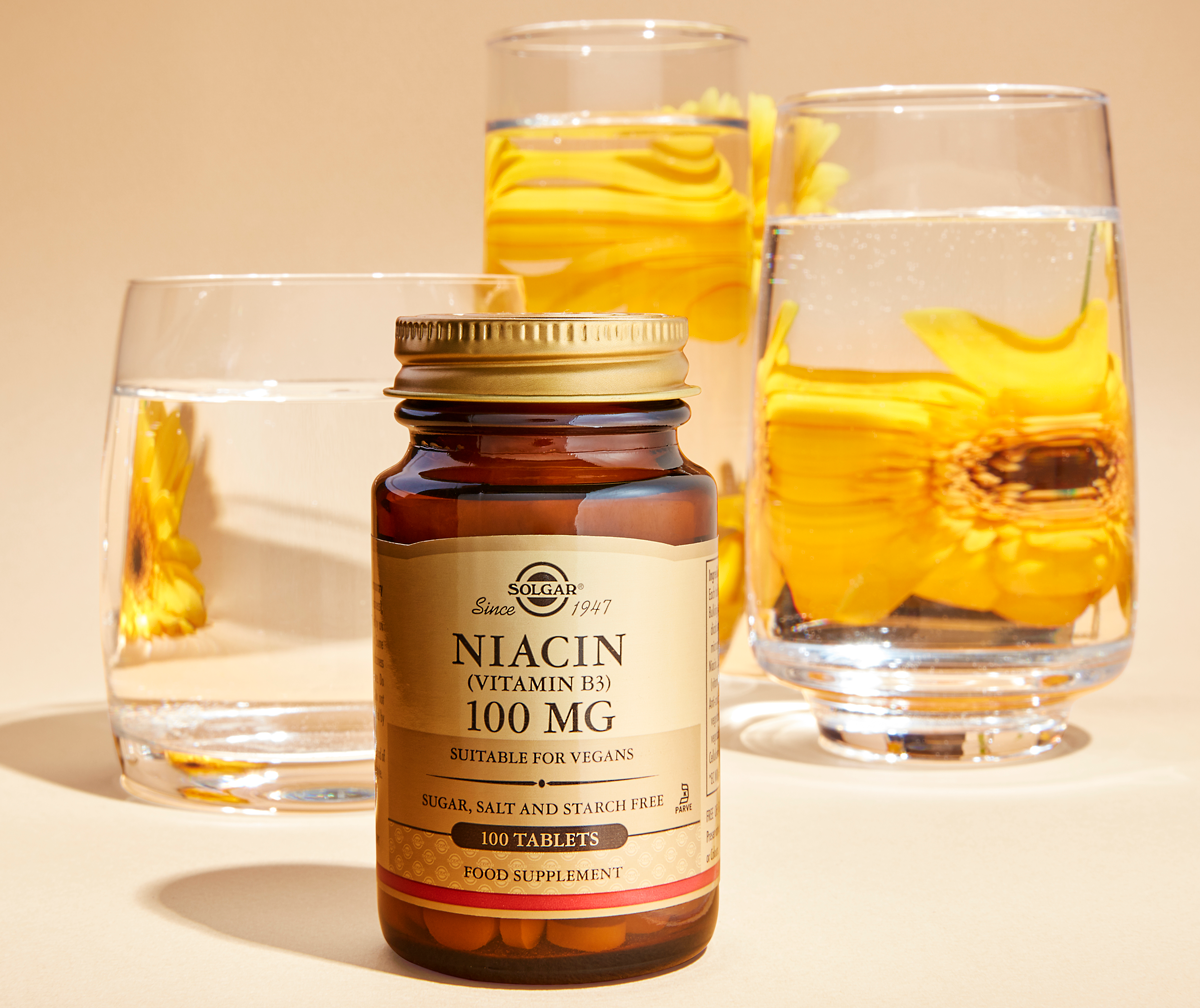Vitamin B3, or niacin, is another member of the B vitamin family. While niacin refers to B3 generally, the vitamin exists in different forms, which can be confusing. For example, you might see it listed as nicotinic acid, nicotinamide or niacinamide all with almost identical properties and roles.
B3 is found in many foods, especially those rich in protein, such as poultry, fish, red meat and liver. Chestnut mushrooms are also a good source, whilst brown rice and peanuts offer average levels.
Niacin has many roles and is required for;
- Normal physiological function
- Normal energy-yielding metabolism
- Normal function of the nervous system
- The maintenance of normal mucous membranes
- The maintenance of normal skin
- The reduction of tiredness and fatigue
Some niacin can also be produced in house from tryptophan, an amino acid found in protein-rich foods like dairy, eggs and poultry. This process relies on there being adequate supplies of B2, B6 and iron, and even then, what can be derived from tryptophan can’t be relied upon as a sole source.
B3 is especially important for the creation of energy as its a key player in the production of NAD (nicotinamide adenine dinucleotide) and NADP, two compounds essential for metabolism. You’ll find B3 in a range of everyday foods, including poultry, tuna, salmon, brown rice, peanuts, and even coffee.
One side effect of niacin is that is triggers the release of prostaglandins, a hormone, that causes blood vessels to dilate, especially in the skin. When taking niacin in supplement form you might experience what’s called a ‘niacin flush’. If you've ever taken a high dose of niacin you may have experienced a warm, prickly redness spreading across your face or body, which is the flush in action.
For some it’s what they look for, for other it’s no more than a warm, tingly feeling, although some people may find it quite uncomfortable and alarming.
To work around this, supplement manufacturers use the alternative forms of B3, such as niacinamide which delivers the same vitamin benefits without the flushing.
Ultimately, choosing the right form depends on your goals. For general health and energy support, niacinamide is a flush-free, user-friendly option. There's also inositol hexanicotinate, often marketed as “flush-free niacin.” It’s a slower-release version that avoids the sudden rush of blood flow. If you do take niacin, stick with lower doses and remember that if you do get a niacin flush, even a mild one, the symptoms usually pass after an hour or so.
As with any supplement, think food first, supplements second. And of course best to check with a qualified professional before adding B3 to your daily routine.


